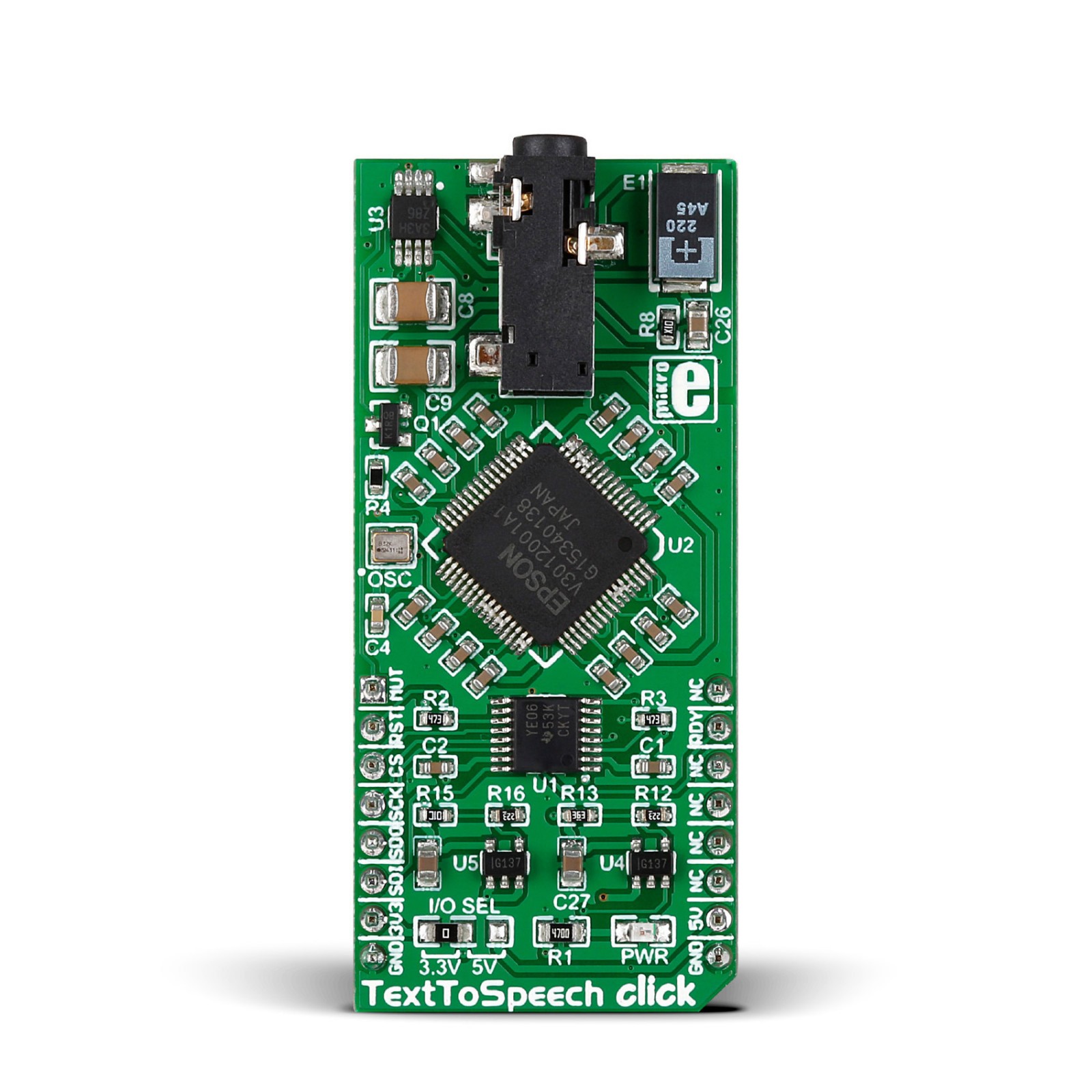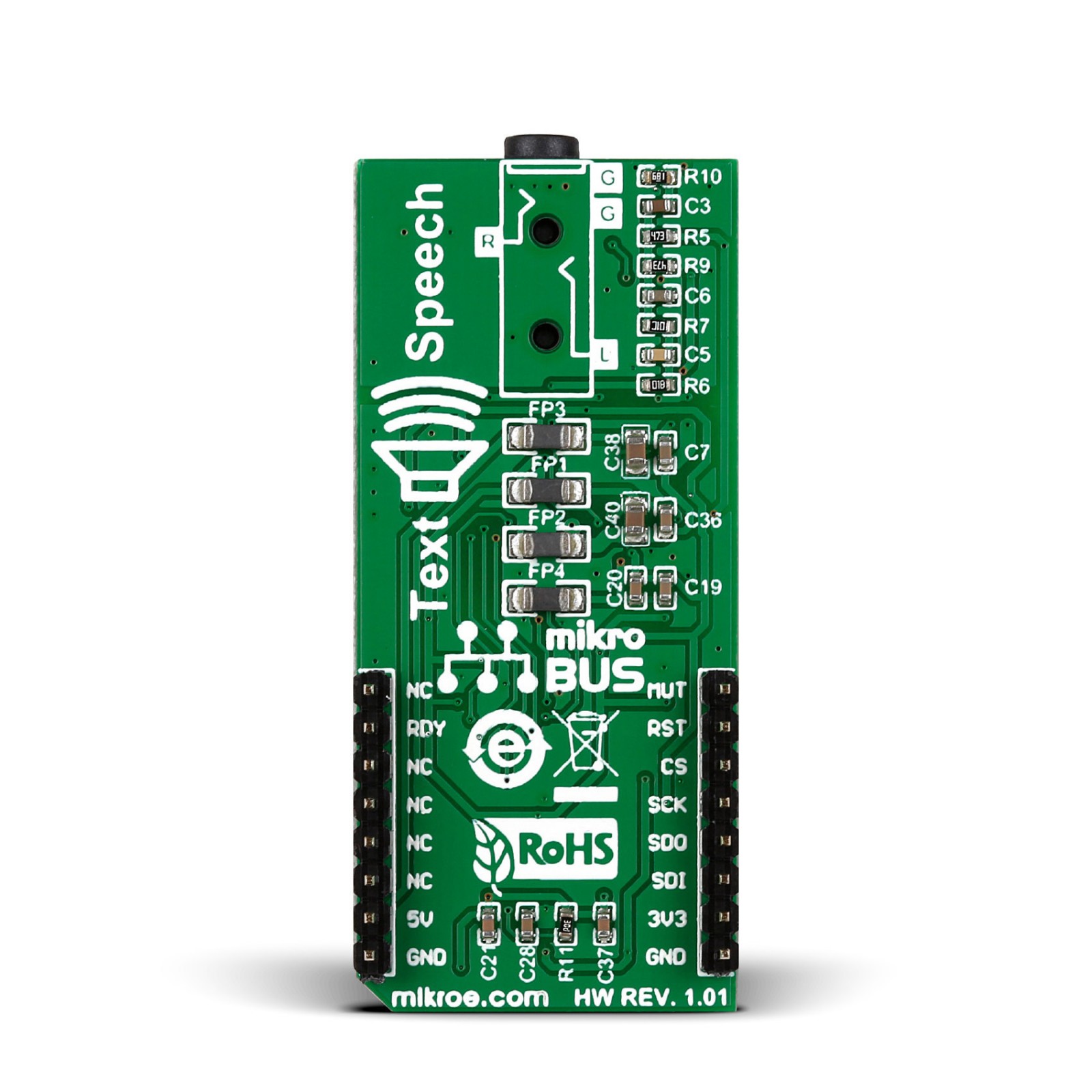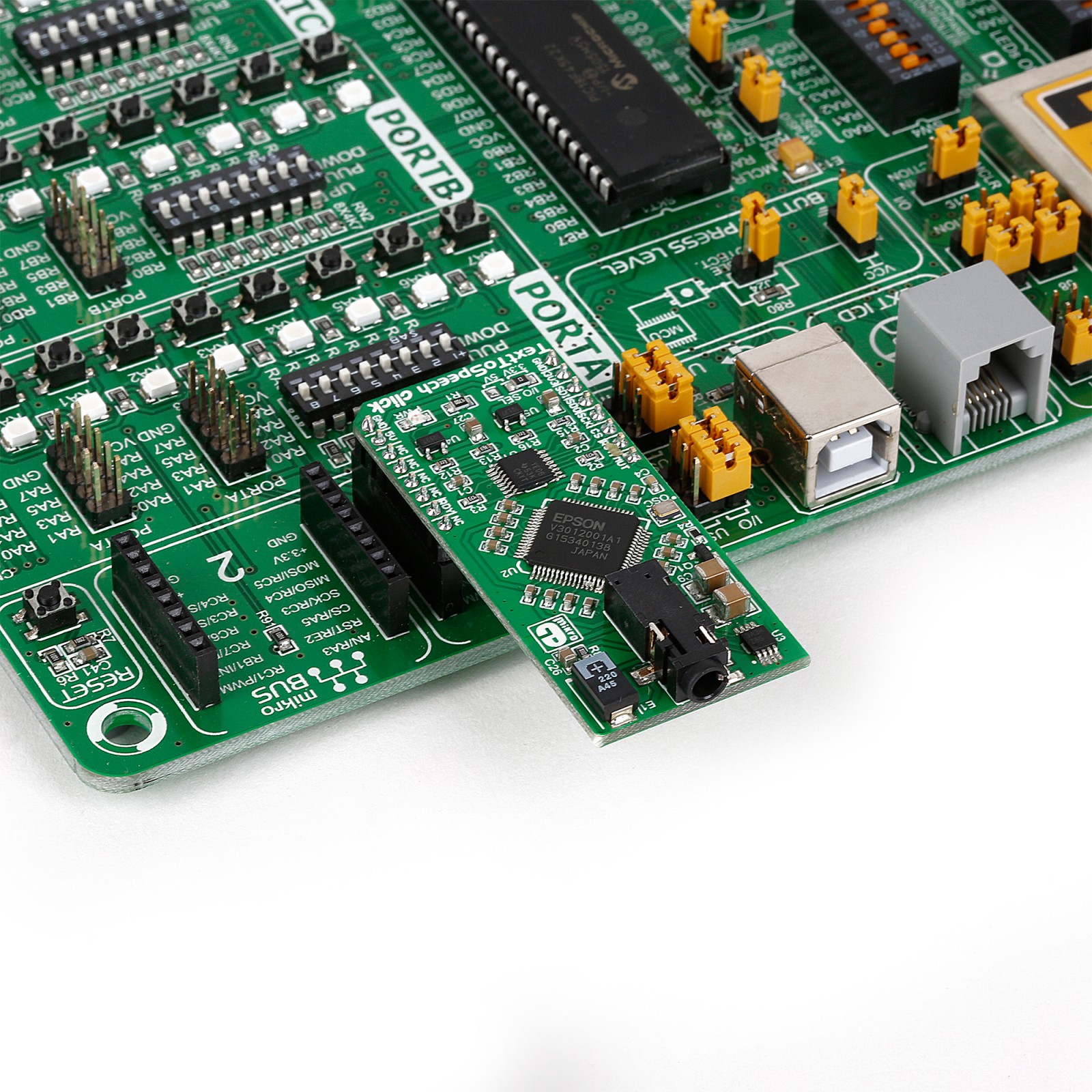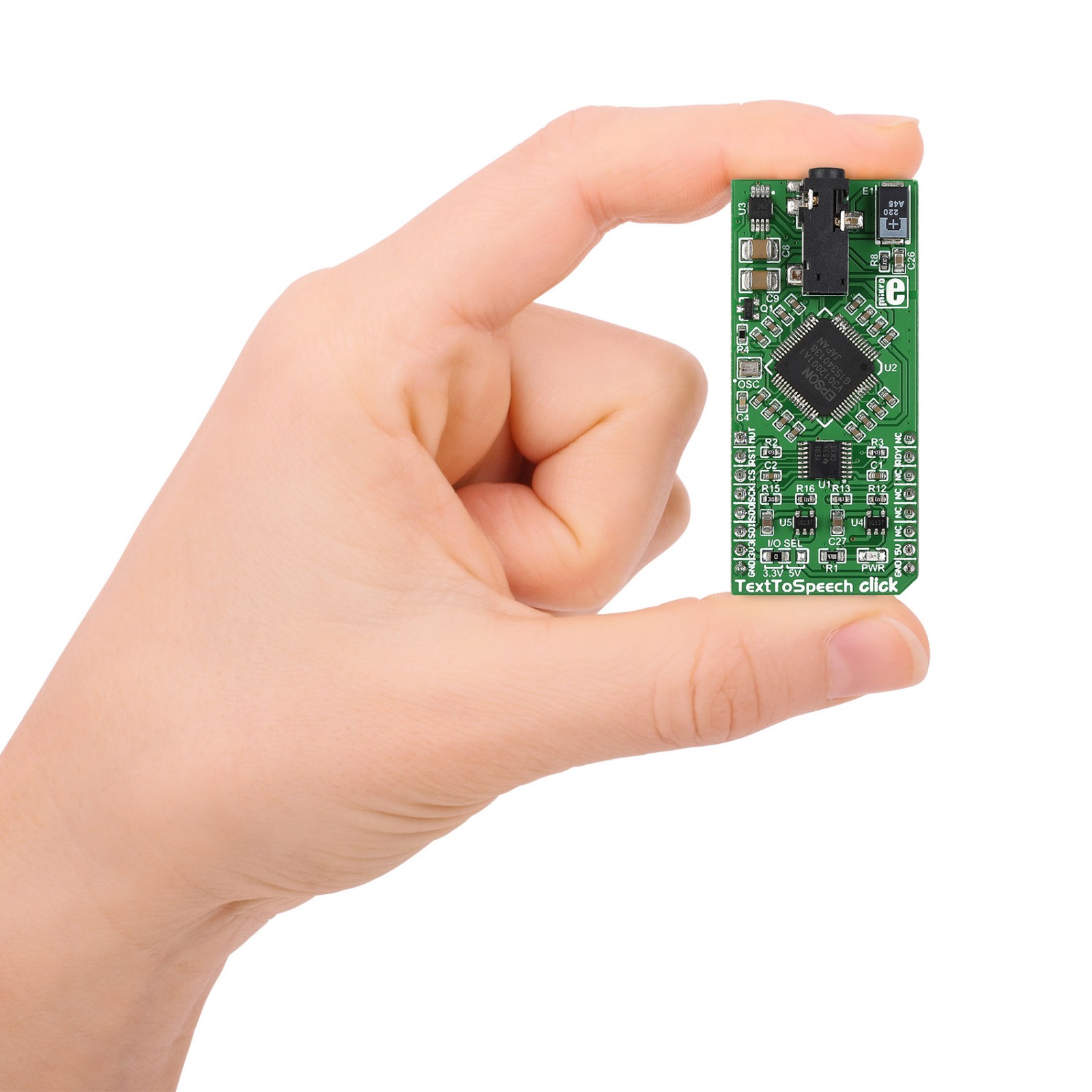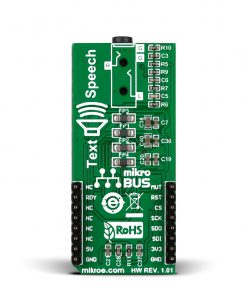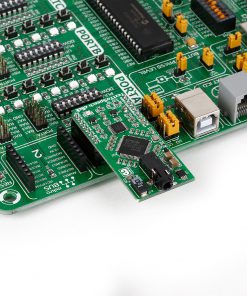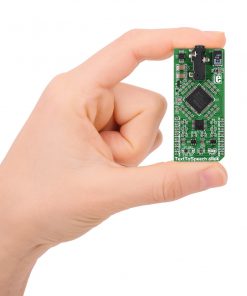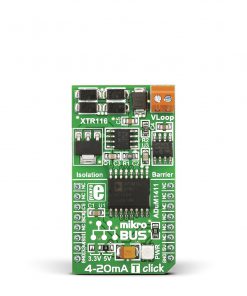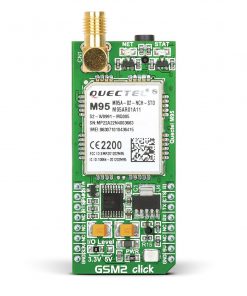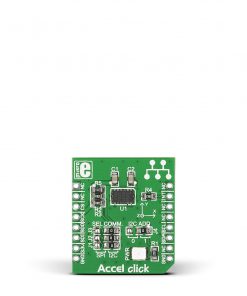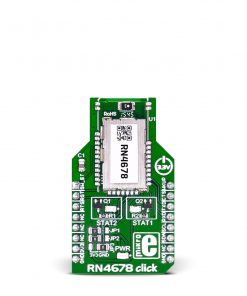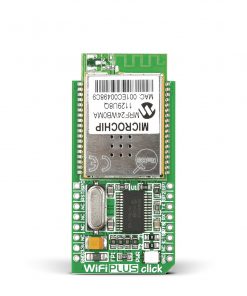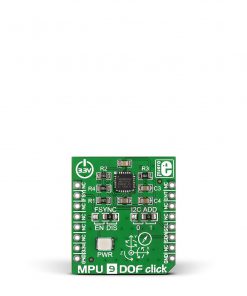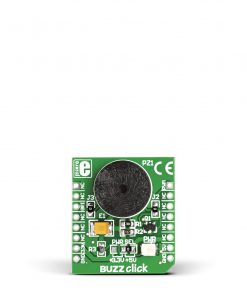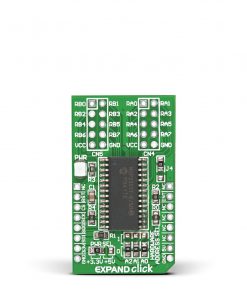TextToSpeech Click
R1,000.00 ex. VAT
Text To Speech Click is a compact add-on board that can make your robot or portable device talk in US English, Castilian Spanish, or Latin American Spanish. This board features the S1V30120, a speech synthesis IC powered by the Fonix DECtalk® v5 engine from Epson. The S1V30120 can talk in one of three predefined voices, and the Fonix DECtalk® v5 speech synthesis engine includes a parser that gives users fine control over the quality, pitch, and intonation of the synthesized speech. The text-to-speech is reproduced at an 11.025KHz sampling rate. This Click board™ makes the perfect solution for the development of talking robots, text-to-speech, and speech-processing applications for embedded systems and portable devices.
Text To Speech Click is supported by a mikroSDK compliant library, which includes functions that simplify software development. This Click board™ comes as a fully tested product, ready to be used on a system equipped with the mikroBUS™ socket.
Stock: Lead-time applicable.
| 5+ | R950.00 |
| 10+ | R900.00 |
| 15+ | R850.00 |
| 20+ | R818.00 |

